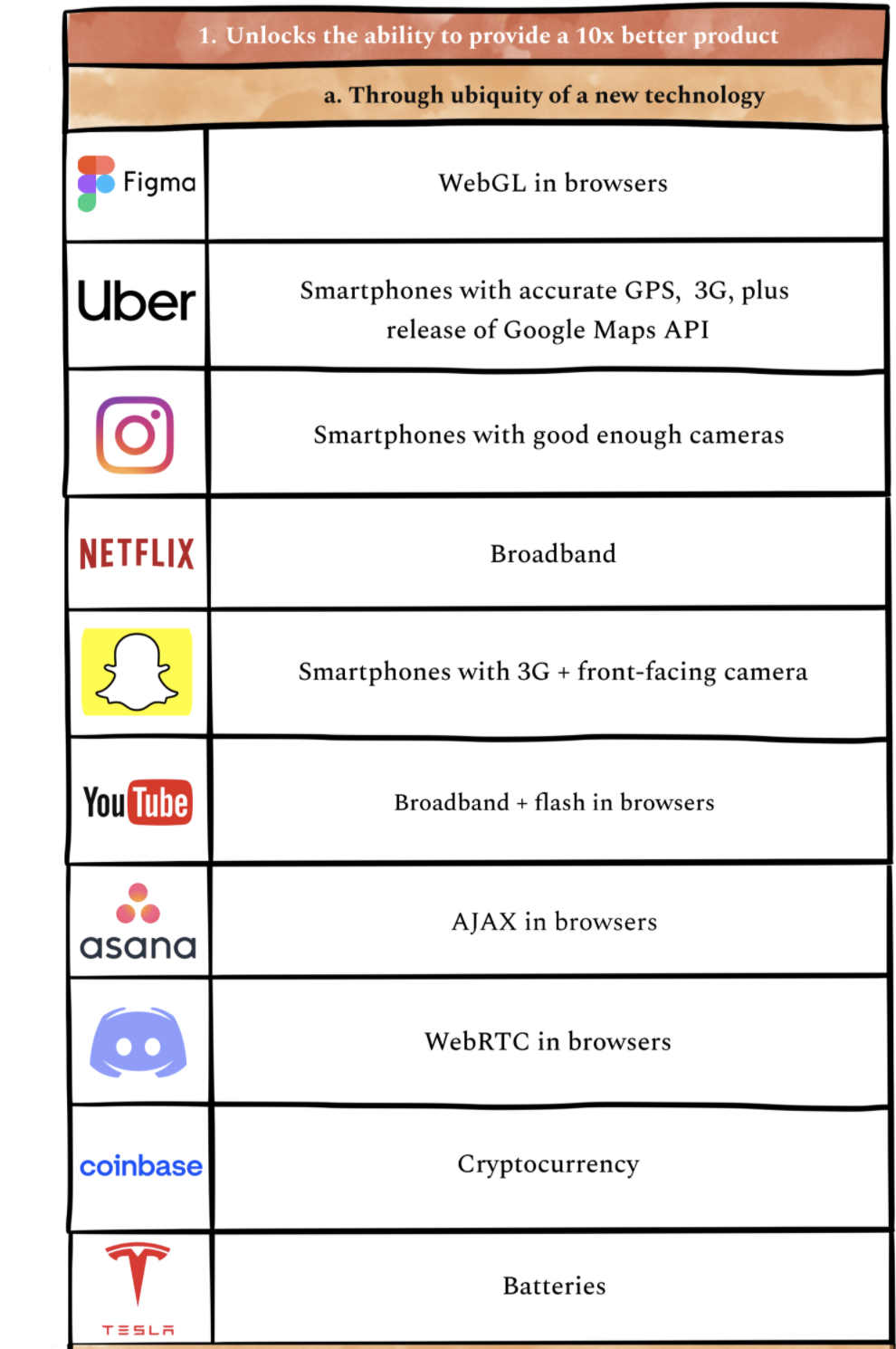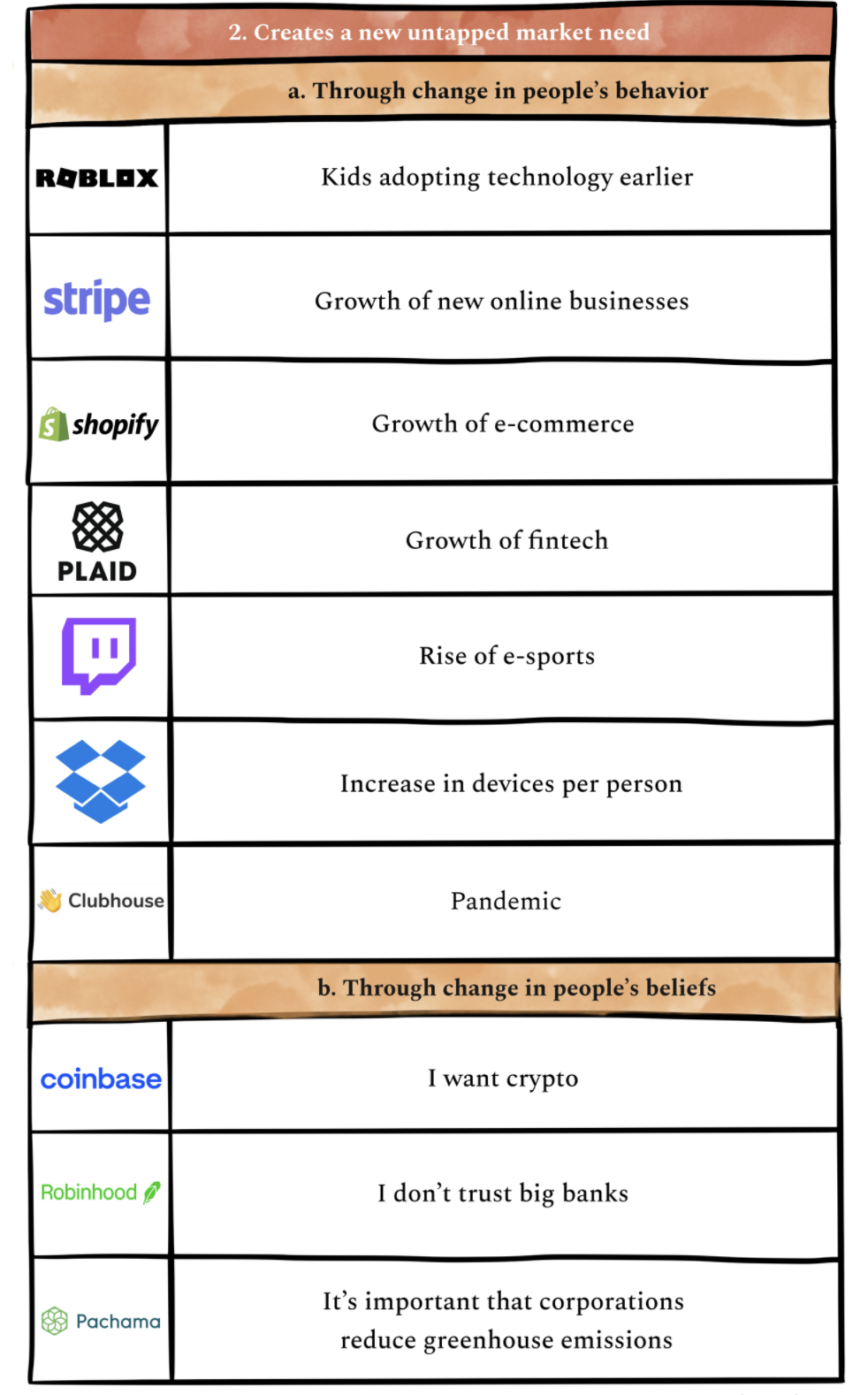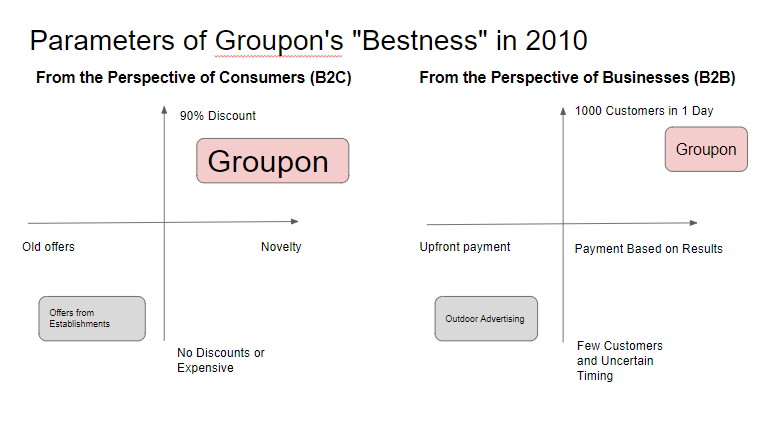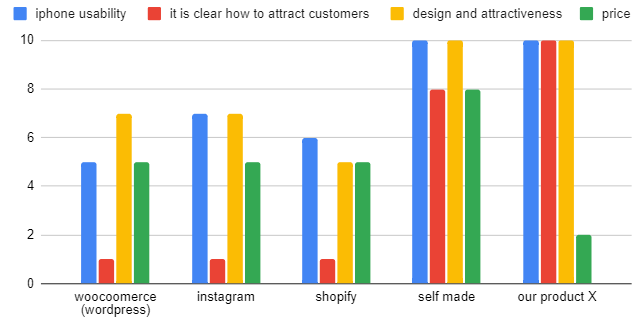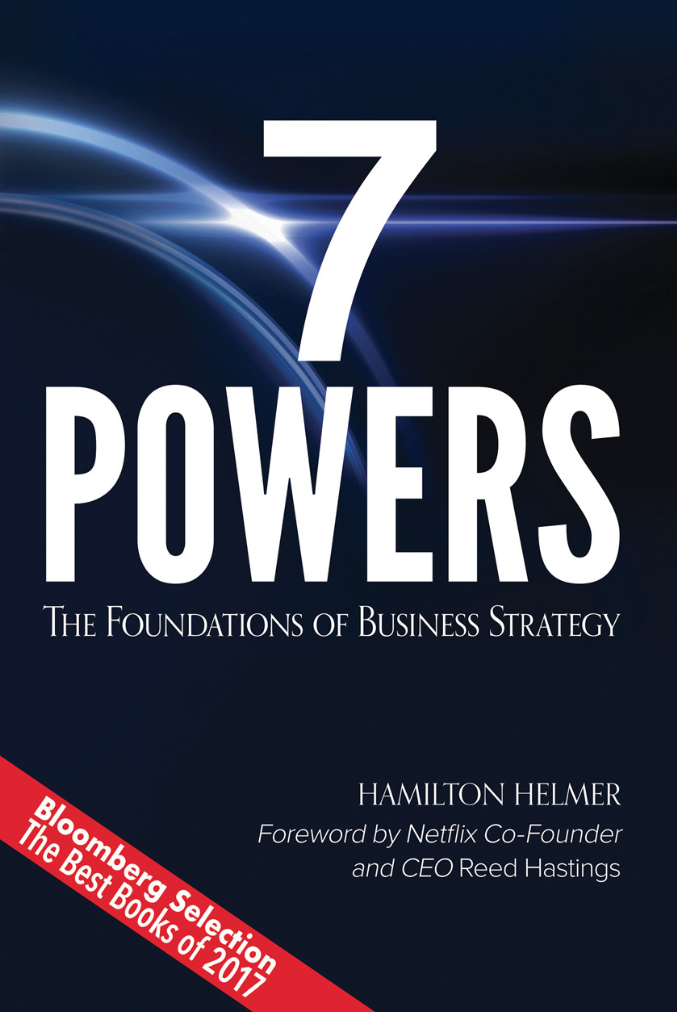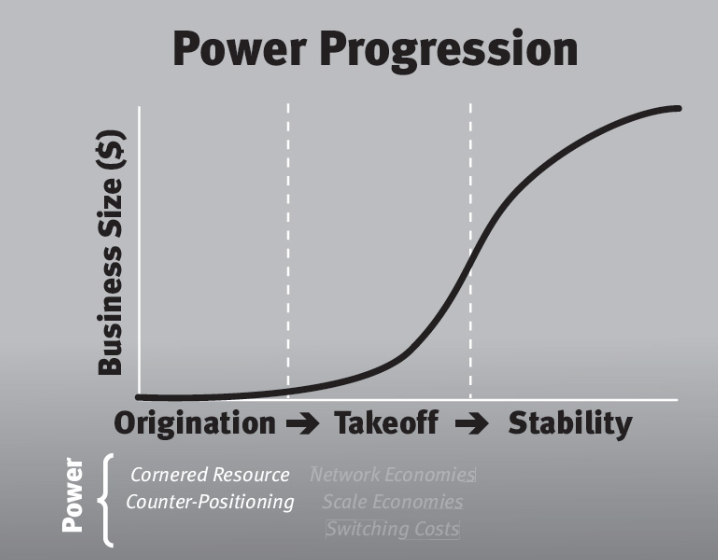Day 3. How “unicorns” outperformed their competitors based on 1-2 parameters. Counter-positioning and “exclusive resources” as the best method at the start. N22
Why will our project be successful here and now?
Suppose you’ve found a successful analog to emulate. How can you assess its chances in the local market? For example, how can you evaluate the chances of a LinkedIn or Flippa.com clone?
The concepts of “taking the work of the main competitor” or “being the best” can help us.
If we look at large successful projects with high investor evaluations, they often follow a “formula.”
What’s common among “unicorns”?
Almost all significant products and businesses were created by applying the formula: Existing significant need/market + New technology or business model
They take an existing significant need or market, such as the food market, real estate market, or job market, and overlay new technology or a business model on it. Research shows that every year, every five years, or every ten years, movements, trends, and opportunities emerge in every market, offering a chance to replace old competitors with new ones. These typically fall into two categories:
- Technological: The ability to create a product that’s 10 times better in some aspect (faster, cheaper, more convenient) thanks to technology.
- Behavioral: New behaviors emerge among people, causing them to evaluate products based on different criteria (e.g., environmental sustainability).
Examples from technology:
- Figma emerged when browsers enabled the implementation of Photoshop functionality.
- Uber emerged when smartphones had GPS navigation, 3G, and Google Maps.
If these technologies hadn’t existed, these services couldn’t have been created.
A successful startup capitalizes on changes in the market and/or technology. Two main opportunities to “displace competitors” are:
- The opportunity to create a product that’s 10 times better in some aspect (faster, cheaper, more convenient) thanks to technology.
- Changes in people’s behavior, causing them to evaluate products based on different criteria (e.g., environmental sustainability), creating opportunities for new products.
Opportunities are time-limited. They may last for several months, a year, or two. You need to seize them before they close.
Why did Groupon succeed? Let’s look at it from two sides. First, the user side – people who buy coupons and discounts. They love bigger discounts. Discounts at restaurants were typically 5-10-15%. What did Groupon do?
- “Let’s offer discounts of 50% to 90%.” Focusing on “savings size” was a wow factor.
- Most people were used to familiar establishments in their area. What did Groupon do? “We showcased a new interesting establishment in your city every day.” For example, in their newsletter, they’d say, “Hey, you live here, but did you know about this amazing waterpark with fantastic massages?” This created a wow effect.
How did the establishment owners perceive this? Imagine being a restaurant or salon owner. They were used to traditional advertising and paying platforms upfront for ads. You paid upfront and weren’t guaranteed customers. With Groupon, there was unpredictability. Would people come? How much would it cost?
- Groupon announced, “On Monday, December 21st, we’re aiming for 100 customers.” At that moment, they could get either 100 or 1000 customers.
- They didn’t take money upfront. This was their strongest selling point. They sold the coupons themselves and then transferred the money to the establishment owners.
The wow effect for the owners was also evident. Later, when many clones emerged, it didn’t have the same wow factor and stopped working in the same way. This is what’s happening now with many trendy projects.
You can see which 1-2 parameters “unicorns” used to outperform their competitors (directly or indirectly).
How is TikTok better than Instagram? TikTok allows content creators to achieve greater reach and likes with less effort. However, some creators are migrating back from TikTok to Instagram. Instagram offers better monetization methods.
What parameter made Uber better than traditional taxi services? Speed of service. Any “unicorn” project on a well-established market succeeds by outperforming competitors in some aspect.
To understand which parameters you can excel in, consider aggregators (stores, services) in your market. For example, if you want to excel in real estate, compare parameters like daily rentals and property sales. Communicate with customers and ask, “How do you choose between different options?”
For each product, you can define the parameters customers use to make choices. If you’re cloning a project in a sizable market, you must identify how you’ll excel in the eyes of all project stakeholders: customers and suppliers. Failure to do so may result in the project’s failure.
In the book “7 Powers,” one of the best books on strategy, I’ve drawn personal conclusions. It discusses how companies compete with others. It lists the seven powers: scale economies, network effects, counter-positioning, switching costs, branding, cornered resources, and process power. My personal takeaway is that at the start, in the very beginning, two of them work best:
- Counter-positioning relative to the main competitor.
- Having exclusive resources or unfair advantages at the start.
Assignment for Day 3
Take one main competitor in your market and one main target audience. The market should be worth over $100 million. Identify 1-2 primary parameters based on which the target audience chooses that competitor. Create your potential “counter-positioning” relative to the main competitor in the form of an XY diagram. What “unfair advantage” or “exclusive asset” can you use for this?




